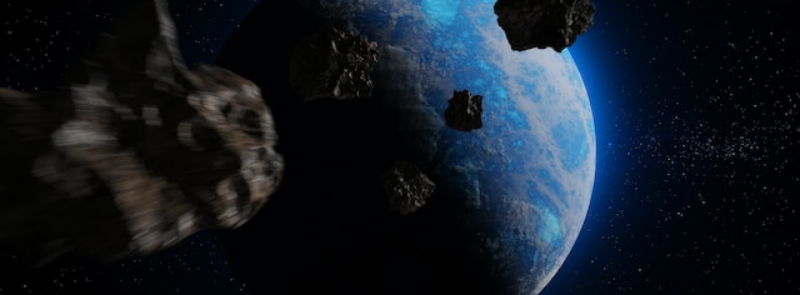
When It Occurs
Every March 23rd
Timeline
Days Passed (966)
# Hashtags
#NationalNearMissDay #SpaceExploration
March 23rd marks Near Miss Day, an annual celebration. Imagine the scenario – a colossal asteroid on the verge of colliding with Earth. This very situation unfolded on March 23, 1989, when an asteroid, comparable in size to a mountain, narrowly missed impact. Fortunately, it was a near miss, averting potentially devastating consequences. People worldwide commemorate this day as a reminder to be grateful that the asteroid spared us from catastrophe. Since 1989, numerous meteoroids and asteroids have passed Earth, and while the odds of a collision remain low, it's a relief to acknowledge our continued safety.
History and Origins of National Near Miss Day
-
The 1989 Near Miss:
- National Near Miss Day marks the anniversary of March 23, 1989, when an asteroid known as 4581 Asclepius (previously designated 1989 FC) came dangerously close to Earth. The asteroid, which measured about 300 meters (approximately 1,000 feet) in diameter, missed Earth by about 684,000 kilometers (426,000 miles). While this distance is roughly twice that of the moon from Earth, it is considered a "near miss" in astronomical terms given the vastness of space.
-
Discovery of 4581 Asclepius:
- The asteroid was discovered by astronomers Henry Holt and Norman Thomas at the Palomar Observatory in California. However, it wasn't until after the asteroid had already passed Earth that its close approach was recognized. If 4581 Asclepius had struck Earth, it could have caused widespread devastation, potentially releasing energy equivalent to several thousand megatons of TNT.
-
Significance of the Event:
- The near miss of 1989 highlighted the importance of tracking near-Earth objects and raised awareness about the potential threats posed by asteroids. It underscored the need for continued monitoring and research to predict and prevent possible future collisions.
Significance of National Near Miss Day
National Near Miss Day holds significance for several reasons:
-
Raising Awareness:
- The day serves as a reminder of the potential dangers posed by asteroids and other near-Earth objects. It encourages public awareness about the importance of monitoring space and investing in technologies that can help detect and possibly deflect dangerous asteroids.
-
Promoting Scientific Research:
- National Near Miss Day highlights the work of astronomers, scientists, and space agencies who study near-Earth objects and develop strategies for planetary defense. It emphasizes the need for continued research and international cooperation to protect Earth from potential impacts.
-
Reflecting on Human Vulnerability:
- The day also serves as a moment to reflect on the vulnerability of our planet and the importance of preparing for potential natural disasters, both from space and on Earth. It reminds us of the need to be vigilant and proactive in protecting our planet.
-
Encouraging Space Exploration:
- National Near Miss Day can inspire interest in space exploration and the study of celestial bodies. Understanding the dynamics of asteroids, comets, and other objects in our solar system is crucial for advancing our knowledge of the universe and ensuring the safety of our planet.
How to Observe National Near Miss Day
There are several ways to observe National Near Miss Day, whether you’re interested in learning more about space, supporting scientific research, or raising awareness about the potential dangers of near-Earth objects:
-
Learn About Near-Earth Objects:
- Take some time to learn about near-Earth objects (NEOs), including asteroids and comets, and the role they play in our solar system. Research the history of significant near-miss events and the potential impact of asteroid collisions with Earth.
-
Watch Documentaries or Films:
- Watch documentaries, films, or educational videos that explore the topic of asteroids, space exploration, and planetary defense. Some popular films, like "Armageddon" and "Deep Impact," dramatize the potential consequences of asteroid collisions, while documentaries provide factual information on the subject.
-
Support Space Agencies and Research:
- Consider supporting organizations and space agencies that work to track and study near-Earth objects, such as NASA's Planetary Defense Coordination Office, the European Space Agency (ESA), and other international space agencies. You can also donate to scientific research initiatives focused on space exploration and planetary defense.
-
Follow Current Research and Missions:
- Stay informed about current space missions and research related to near-Earth objects. For example, NASA’s OSIRIS-REx mission, which collected a sample from the asteroid Bennu, and ESA’s Hera mission, which is part of an effort to test asteroid deflection techniques, are significant projects in this field.
-
Raise Awareness on Social Media:
- Use social media to raise awareness about National Near Miss Day and the importance of monitoring near-Earth objects. Share facts, articles, and videos about asteroids, space exploration, and planetary defense, and use hashtags like #NationalNearMissDay or #NearMissDay to connect with others.
-
Attend or Host an Educational Event:
- If possible, attend or host an educational event focused on space and near-Earth objects. Many science centers, planetariums, and educational institutions offer programs and events related to space exploration, including lectures, workshops, and stargazing nights.
-
Participate in Citizen Science:
- Get involved in citizen science projects related to astronomy and space exploration. Many organizations offer opportunities for the public to contribute to scientific research, such as tracking asteroids or monitoring the night sky for celestial events.
-
Reflect on Earth’s Vulnerability:
- Use the day as an opportunity to reflect on the vulnerability of our planet and the importance of disaster preparedness. Consider what actions can be taken to protect Earth from potential natural disasters, whether they originate from space or on Earth.
Fun Facts About Near-Earth Objects and Space
-
Close Encounters: Near-Earth objects are classified as such if their orbit brings them within 1.3 astronomical units (about 121 million miles) of the Sun. Thousands of NEOs have been discovered, and their movements are closely monitored by space agencies.
-
Planetary Defense: Scientists and engineers are developing various methods for planetary defense, including asteroid deflection techniques. These include kinetic impactors (crashing a spacecraft into an asteroid to change its trajectory) and gravitational tractors (using the gravitational pull of a spacecraft to alter an asteroid’s path).
-
The Tunguska Event: In 1908, a massive explosion occurred near the Tunguska River in Siberia, Russia, likely caused by the airburst of a small asteroid or comet. The explosion flattened an estimated 80 million trees over 830 square miles, illustrating the potential devastation of an asteroid impact.
-
Chicxulub Crater: The Chicxulub crater in Mexico’s Yucatán Peninsula is believed to be the impact site of the asteroid that caused the extinction of the dinosaurs around 66 million years ago. The crater is over 110 miles in diameter, indicating the enormous size and impact of the asteroid.
-
Near-Earth Asteroid 99942 Apophis: Apophis is one of the most well-known near-Earth asteroids, initially feared to have a high probability of impacting Earth in 2029. However, further observations have ruled out the possibility of impact for the foreseeable future.
Conclusion
National Near Miss Day is a day of reflection, education, and awareness about the potential dangers posed by near-Earth objects and the importance of planetary defense. By observing this day, we can better understand the risks associated with asteroids, support scientific efforts to protect our planet, and stay informed about ongoing research and space missions. Whether through learning, raising awareness, or supporting space exploration, National Near Miss Day offers an opportunity to recognize the importance of vigilance in safeguarding Earth from the threats that lie beyond our atmosphere.


